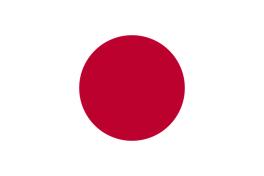Donate to Support Supercluster
Your support makes the Astronaut Database and Launch Tracker possible, and keeps all Supercluster content free.
SUPPORTSupercluster on Patreon
Your support makes the Astronaut Database and Launch Tracker possible, and keeps all Supercluster content free.
SUPPORTThis goes
to space
Raise-2
As a part of JAXA's second Innovative Satellite Technology Demonstration program, this rideshare mission will carry nine satellites into space.
Among them are one smallsat (RAISE-2), four microsatellites (HIBARI, Z-Sat, DRUMS, TeikyoSat-4), and four CubeSats (ASTERISC, ARICA, NanoDragon, KOSEN-1).
RAISE-2
The RApid Innovative payload demonstration Satellite-2 is a satellite for on-orbit examples of six demonstration components and equipment selected by the public general public.
HIBARI
HIBARI will test a new satellite attitude control technique (VSAC), which provides rapid satellite orientation, but also offers high stability.
Z-Sat
Z-Sat will demonstrate a technology that will enable a more accurate observation of heat sources by superimposing images taken at several different wavelengths, using a near-infrared and far-infrared camera.
DRUMS
DRUMS is a satellite designed to develop instruments for the observation, approach and capture of orbital debris.
TeikyoSat-4
TeikyoSat-4 will test a new satellite platform capable of automatically performing biology, mechanical engineering or physics experiments using space microgravity.
STERISC, ARICA, NanoDragon & KOSEN-1
- ASTERISC is equipped with a large membrane-like dust sensor, which will be used for the observation and study of orbital dust.
- ARICA is a test satellite for communication with commercial satellites such as Iridium or GlobalStar, which will then establish a link between these satellites and the ground. The 1U CubeSat is also equipped with a gamma-ray detector, a completely new technology that has never been tried before.
- NanoDragon is a satellite that will be used to demonstrate the effectiveness of a new on-board computer for CubeSats (OBC).
- KOSEN-1 is a satellite intended to be used for radio observation of Jupiter thanks to a CubeSat specially designed and equipped to be very precise in its orientation, equipped with two ultra-thin reaction wheels, as well as a new software system. It will deploy a 7m long antenna to study Jupiter.
Photo: RAISE-2 Credit: JAXA
On this
rocket
Epsilon
Epsilon is a Japanese solid-fuel rocket built specifically to address the need for lower launch costs for science missions and replace the M-V rocket.
Development began in 2007 with a first launch on September 14th, 2013.
The first four flights were all successful, with a price tag for each launch of $38 million, about half that of its M-V predecessor.
A slow launch rate of just four missions in seven years plagued the rocket in the beginning; however, seven upcoming missions are currently planned over the next four years.
Epsilon can fly with either three or four stages depending on mission needs and can place up to 1,500 kg in low Earth orbit.
Image Credit: JAXA
From this
spaceport
Mu Pad, Uchinoura Space Center, Japan
The Uchinoura Space Center, is a space launch facility in the Japanese town of Kimotsuki, Kagoshima Prefecture.
Before the establishment of the JAXA space agency in 2003, it was simply called the Kagoshima Space Center.
All of Japan's scientific satellites were launched from Uchinoura prior to the M-V launch vehicles being decommissioned in 2006. It continues to be used for suborbital launches and has also been used for the Epsilon orbital launch vehicle to this day.
The first launch of the Epsilon rocket from this launch site was performed in September 2013.
Here's where to view Raise-2
Viewing Sites
- Xichang, People's Republic of China
GET THE SUPERCLUSTER APP
THE SUPERCLUSTER PODCAST
A podcast exploring the amazing milestones that changed space history, the wildest ideas that drive our future, and every development in this new Golden Age of Space.
Donate to support
Your support makes the Astronaut Database and Launch Tracker possible, and keeps all Supercluster content free.
SupportCOPYRIGHT 2021 SUPERCLUSTER LLC

